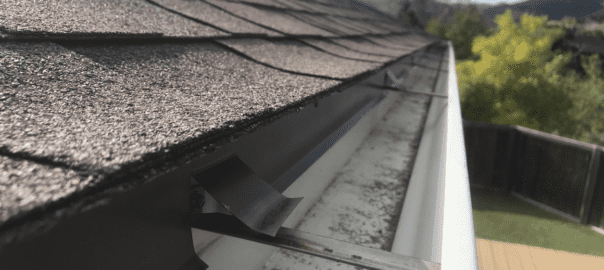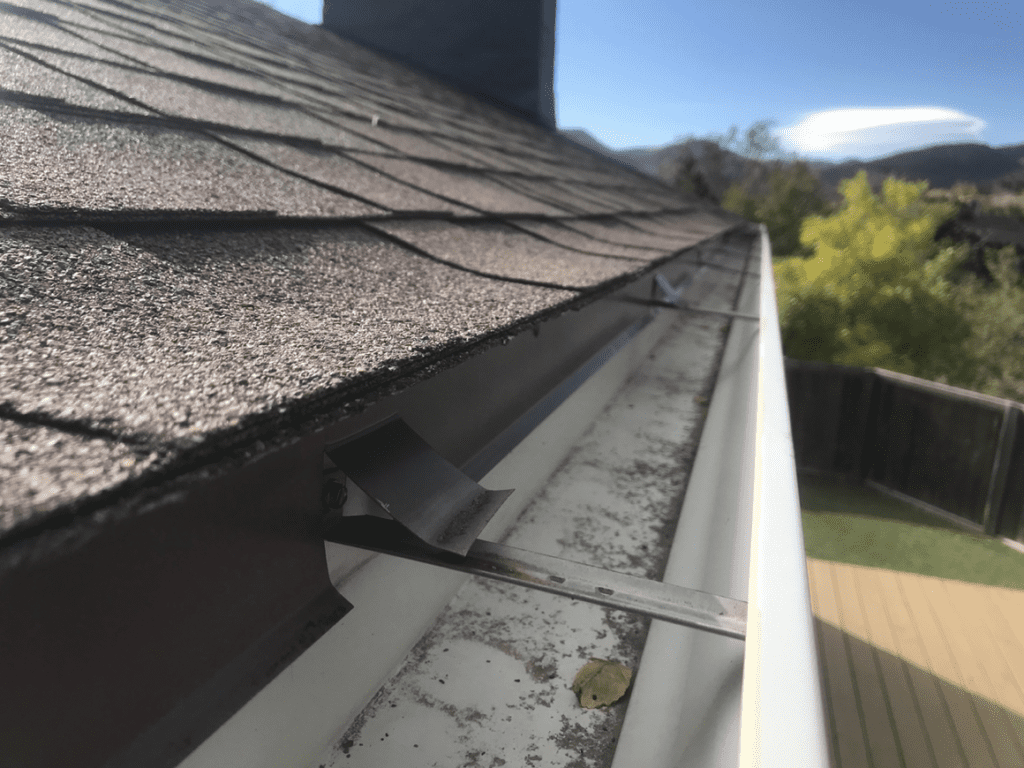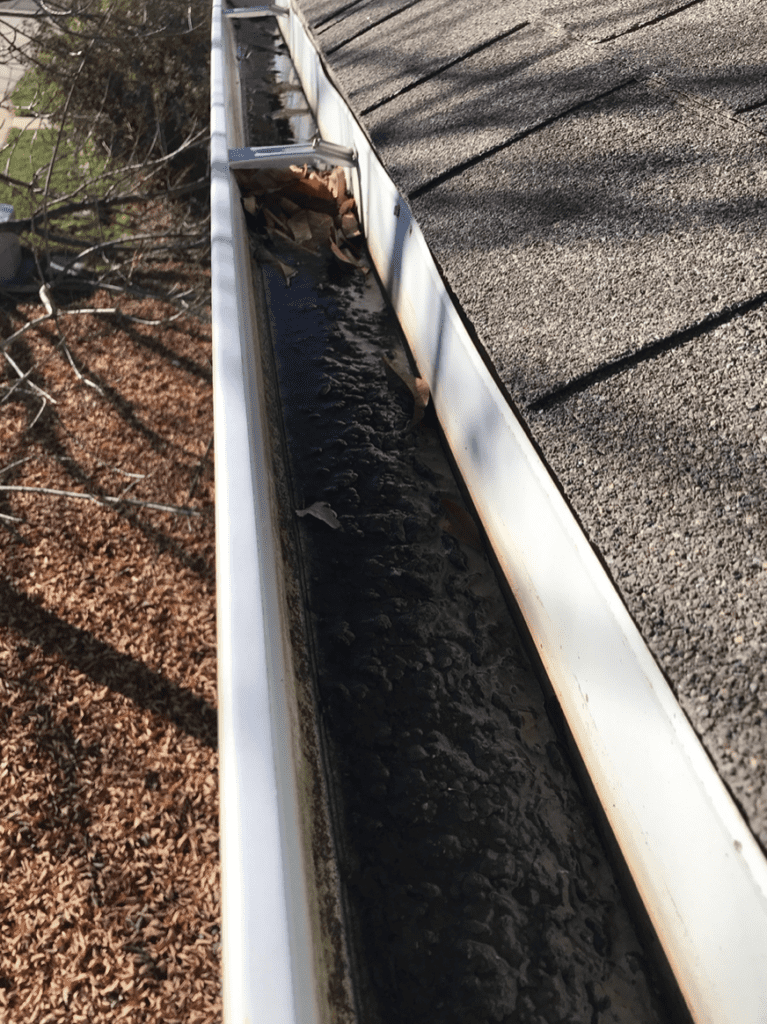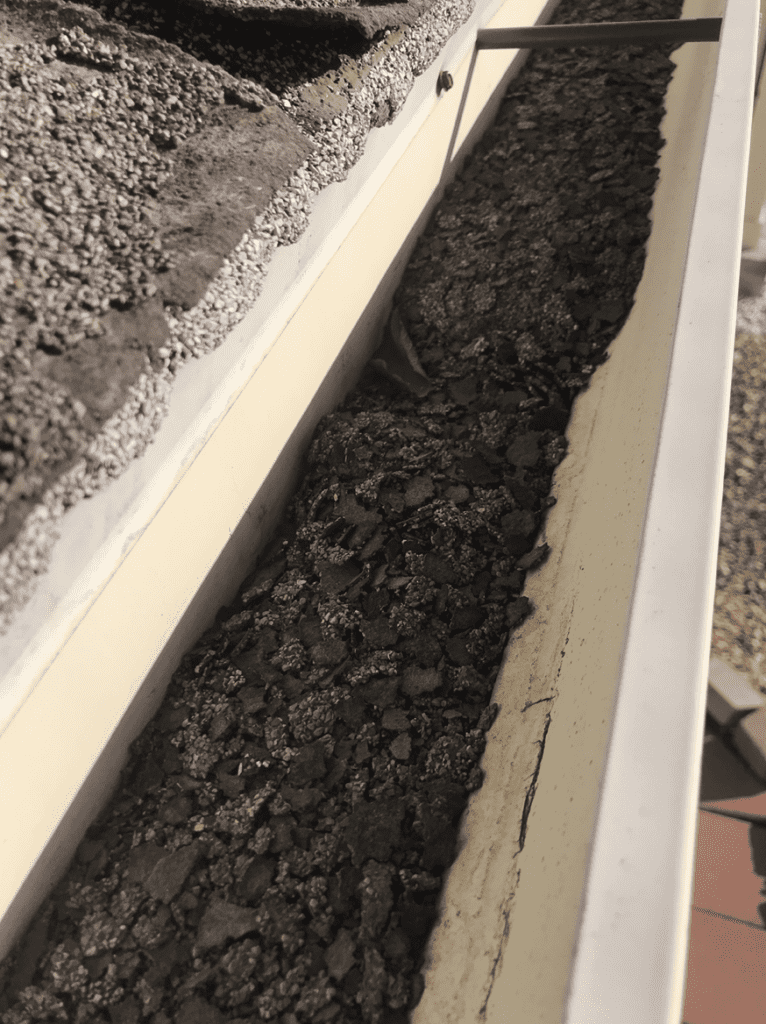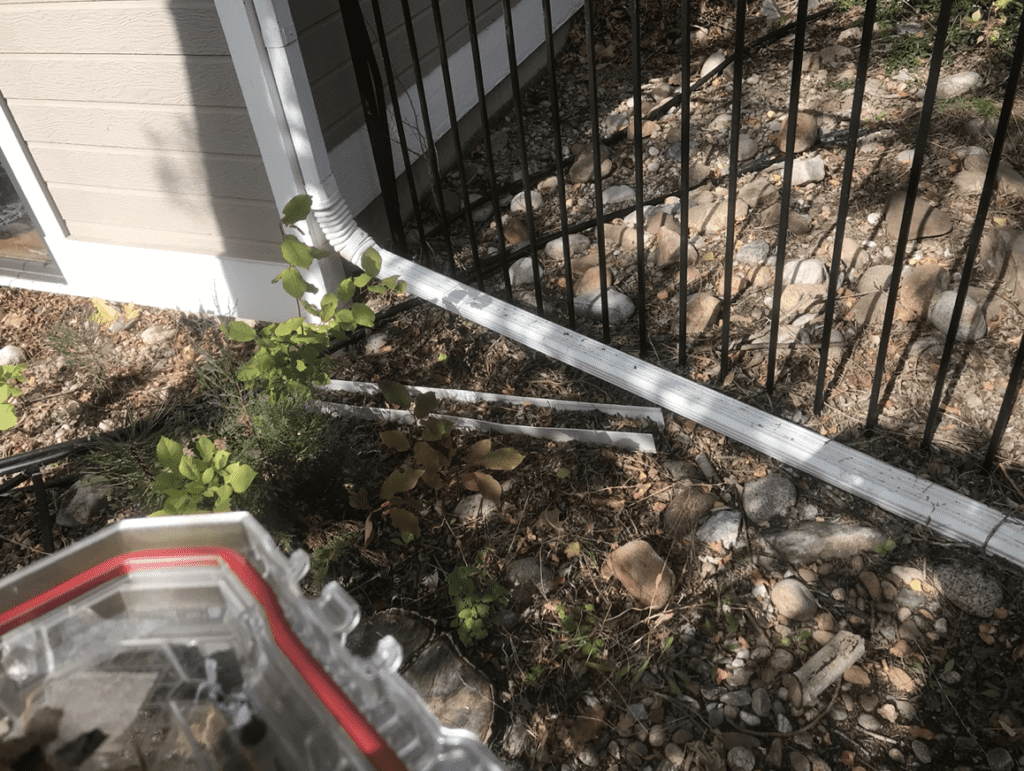When a well-designed and well-maintained gutter system is installed on a home or business, it should last for decades if they are not damaged in a storm, ice damming or in high winds. That said, there will come a time when even the best maintained gutters will need to be replaced because they have “aged-out” and have reached their life expectancy.
This article will give you a heads up on what to look for when an “out of the norm” situation occurs to your gutters so that you can take care of it as soon as you notice it – so that additional damage does not happen. One of the joys of being a “homeowner.”
Here are 13 reasons you might need to fix or replace your gutter system.
1) CLOGGED/BLOCKED GUTTERS – When gutters are catching the rain and snow as it comes off your roof, that means it is also catching EVERYTHING else that has fallen up on the roof. And it will ALL end-up in the gutters. Organic matter such as leaves, pine needles, twigs, branches, aggregate and dirt coming off your roof, or even blowing trash can build up over time or even just a season if you don’t keep them clear and clean. And rotting organic material can form a thick sludge that will clog gutters and have them overflowing quickly if there is no maintenance performed on them. You can put on a “gutter guard” that will keep most of the leaves and twigs from ending up in the gutters. And honestly, you have to be careful with “gutter guards” because when winter rolls around, gutter guards can possibly lead to ice damming and icicles forming and falling off the gutters, which can be a hazard. So, if you have gutter guards put on, be careful and be aware.
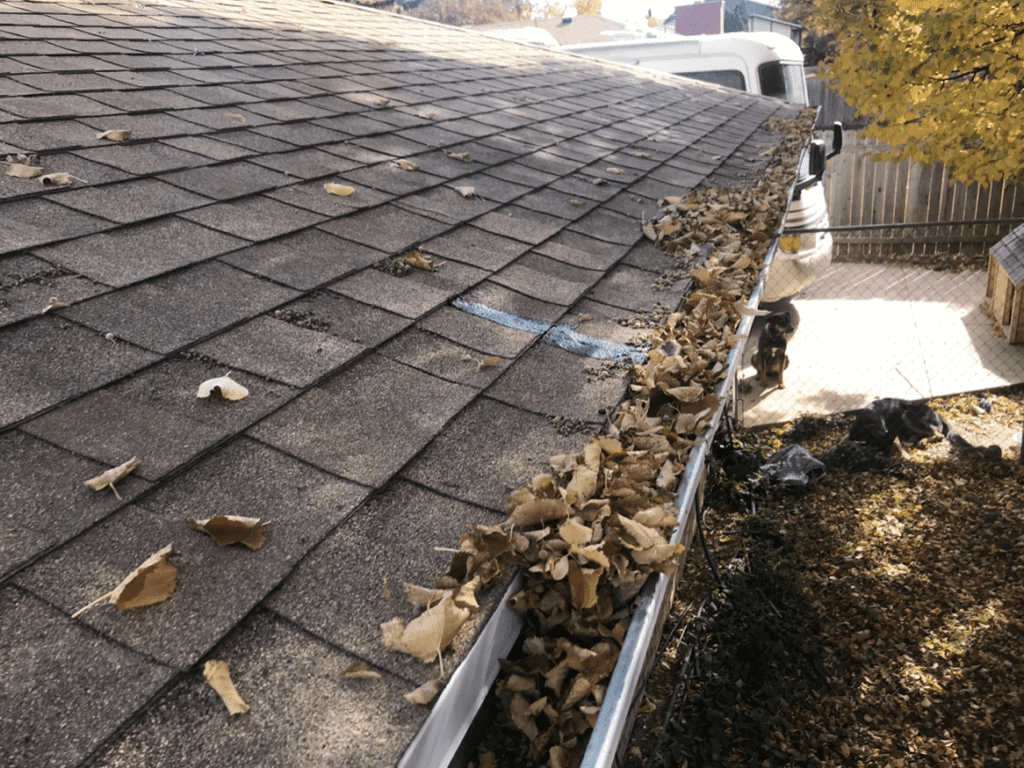
2) GUTTER/DOWNSPOUT LEAKS – When gutters are installed, the installer may have missed sealing a joint or a downspout hole with what we call “gutter cement.” It’s meant to seal the gutters so that you don’t have any leaks. Leaking can get behind the fascia and soffits and cause additional damage if not corrected.
3) BACK-FLOWS – Clogged gutters can also lead to overflowing or “back-flowing” gutters which can pour over the edge and defeat the purpose of having gutters. And in the winter months, those leaks can also lead to ice on the pavement which can be a huge hazard. Full gutters from clogs or having them hung improperly can also lead to ice forming in the gutters when it’s cold. That ice can expand and cause issues like pushing the gutters away from the fascia. Ice damming can form up under the shingles and cause damaging leaks. Also, convergence points of where corners meet and the system gets complicated can also be a point of issues. Have a professional look at them.
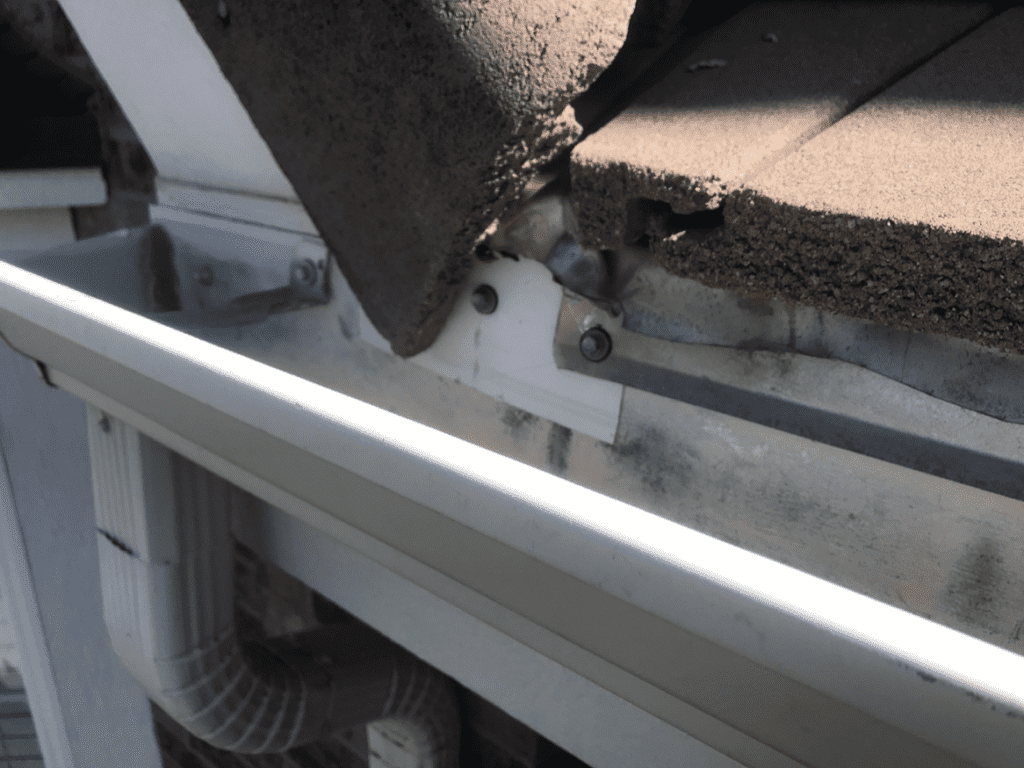
4) POORLY SLOPED GUTTERS – When gutters are installed correctly, they should have a slight slope towards the downspout drains so that when it rains, they drain properly and don’t have standing water in them after a precipitation event. If they are not sloped correctly, water will pool and when mixed with leaves, dirt and normal granule loss from your shingles, it can eventually create a blocked gutter. Not to mention that during a storm, they will not be draining properly. And standing water can pool and damage gutters over time. I’m not sure that most people realize that their gutters have a slight slope. I’ve had clients tell me that their gutters are crooked. If you are not aware of how they are hung, If you go to the front of your home, and look at them you should be able to see it. If they are not sloped, or sloped properly it will become a problem over time.
5) SAGGING GUTTERS – Gutters have traditionally been attached to your fascia and trussing beams by long and large nails that were hammered into the end of the trussing beams. Now gutters are attached with “hangers” that are placed along the gutter and screwed into the fascia to hold the weight of the gutter and the contents during a weather event. When its wintertime, and a tremendous amount of snow and water that fills your gutters, maybe there is an abundance of organic material and granule clogged in the gutters or they were not installed with enough hangers, the extra weight can cause them to sag and they can even buckle. The weight just overwhelms the existing hangers and they can fail.
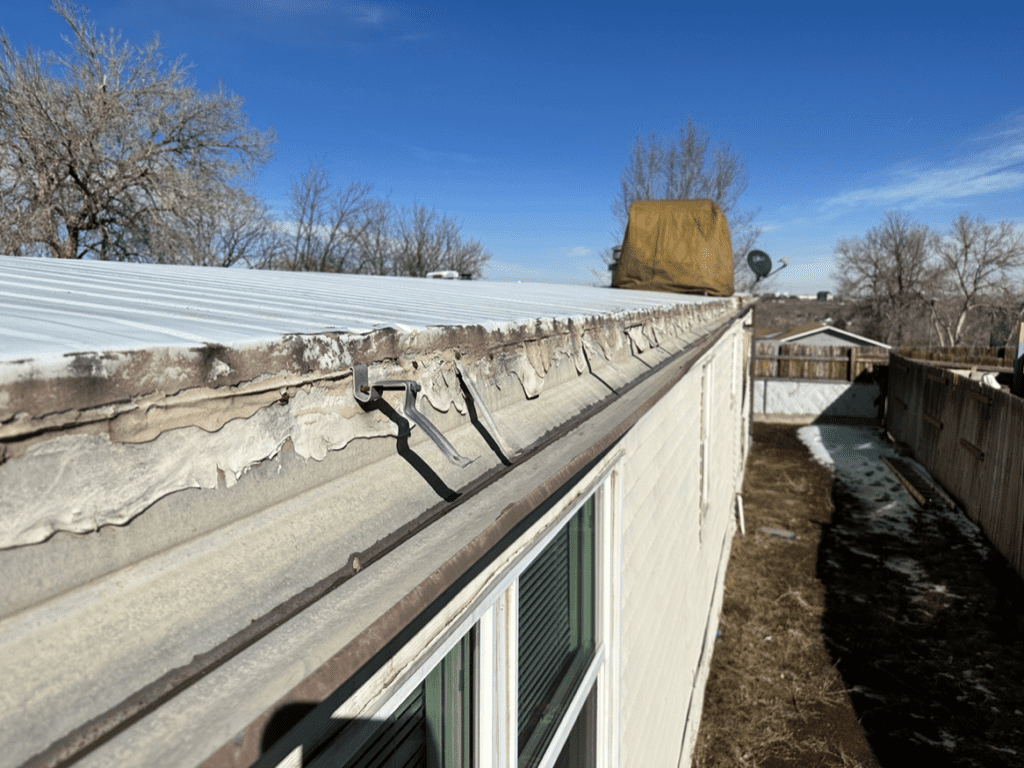
6) DAMAGED GUTTERS – Gutters can be damaged for a number of reasons. They can be dented, become cracked, bent out of their original shape, they can be sagging, clogged or blocked and most likely have the seams fail and leak. Even seamless gutters have a few seams. They are limited, but they are there. All of these can cause water to pool or organic material to clog and create extra weight in the gutters. Eventually, when a ladder gets placed against them to get up on that section of your roof, they can come off their hangers and even collapse. Hopefully you as the homeowner or a professional is doing the necessary maintenance so that this does not occur. Gutters falling off your home can bring a whole slew of additional issues that you just don’t need.
7) IMPROPERLY BUILT DOWNSPOUTS – If your downspouts are built correctly, everything should be fine. There should be enough drainage around the house from the gutters and drainage should not be an issue. Sometimes downspouts need to be placed in areas where the water should be aimed at a drain when emptying on concrete or should be channeled away from the foundation of a house with an extension or “kick-out.” Downspouts can also be missing the sealant or “gutter cement” that seals around the opening at the gutter. If you are having issues with them leaking or getting clogged, have a professional look at them.
8) ICE DAMMING – When there is too much snow on top of your roof, and warm and cold days and nights, your gutters can be overwhelmed with ice damming. The snow will thaw and freeze and thaw and freeze. It will start to create hanging ice cycles and freezing up on the roof, especially at the gutter line. This can be an issue if not addressed. The ice/snow can form and push up under shingles even pulling nails up and working moisture up under the underlayment on the roof, which can cause an internal leak. Most of the time, “heat cable” placed in the gutters or zig-zagged near the eve of the roof can prevent this kind of build-up of ice. But not always. Sometimes it requires manual effort to pull the snow off the edge of the roof with a snow rake to lessen the snow load. This can be dangerous, so if you are not comfortable on a ladder, get a professional to help.
9) INCORRECT SIZED GUTTERS or DOWNSPOUTS – 5” seamless gutters and 2” by 3” downspouts are the norm when it comes to the standard size. Depending on the size of the roof and the amount of water coming off each slope, you may need to upgrade to 6” gutters and 3” by 4” downspouts. Larger roofs with multiple combining of slopes can create too much water trying to drain out of too little drainage and cause problems.
10) TOO LITTLE DRAINAGE FROM DOWNSPOUTS – Gutters are installed on the eves of the home. (The edge of the roof at the end of a slope.) Where downspouts are placed can be a challenge in certain situations because of needing to drain away from walkways, basement window wells, home foundations and more. Sometimes gutter systems are designed with too little drainage to handle the amount of rain. Here on the Front Range, we seldom see that kind of precipitation, and it can, and does occur. So, most systems are designed and built for the norm. The lack of adequate drainage can cause water to get behind the gutters and cause issues with leaks inside the home along with long term issues with fascia and soffits if they are not addressed. Call out a professional to help come up with the proper solution to inadequate drainage.
11) OLD GUTTERS – Here on the Front Range, with regular hail storms, gutters are most likely replaced from time to time but sometimes they can just age and outlast their lifespan and need to be replaced before they cause a bigger issue. We do see gutters just needing to be replaced for the reasons listed in this article above.
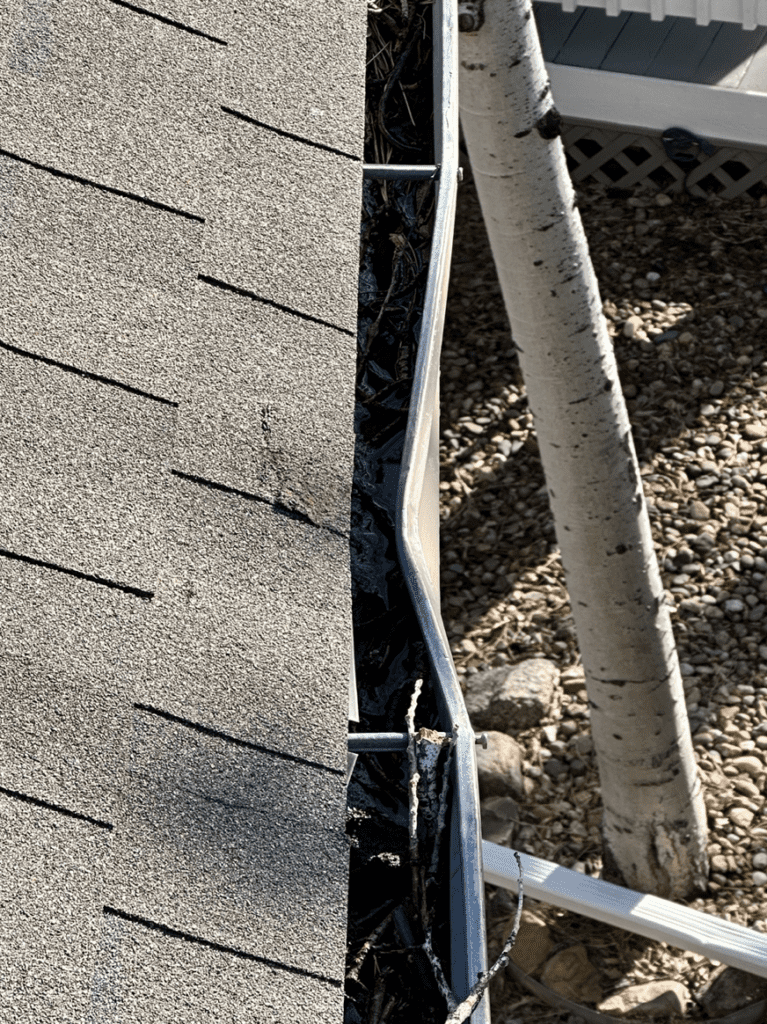
12) ROTTING FASCIA or SOFFITS MEANS… – When you see a rotting section of your Fascia or Soffit or you see the paint peeling on sections of them, you have water that is leaking or overflowing out of your gutters. This is a sign to deal with the issue immediately before it worsens.
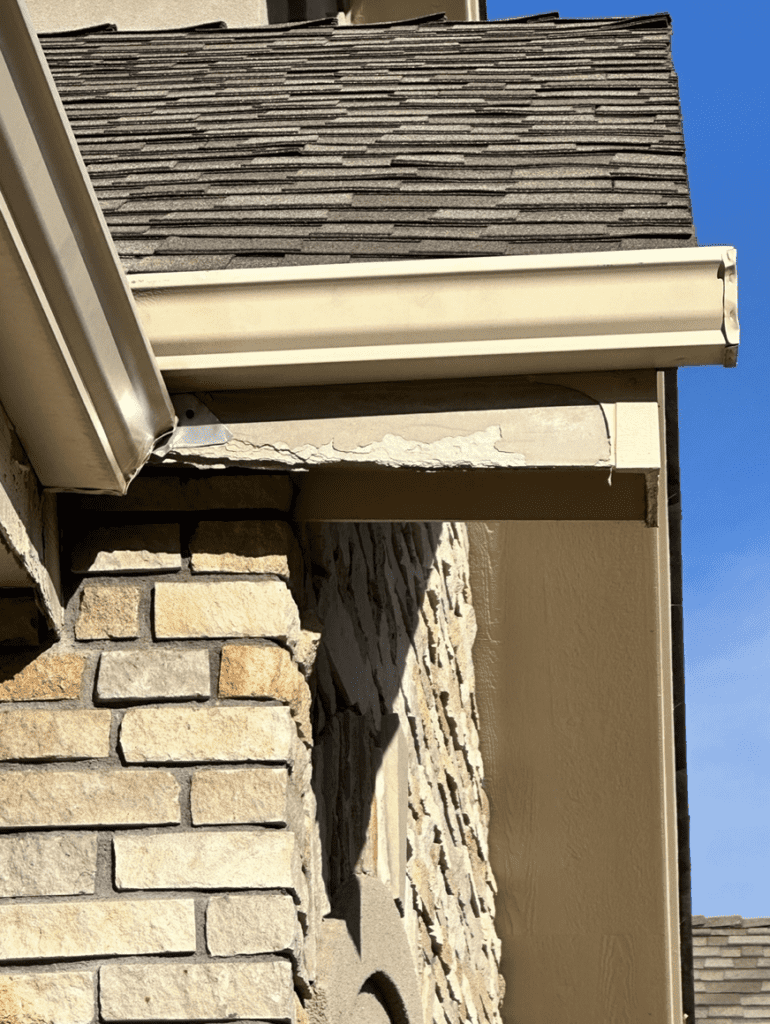
13) CHANNELING WATER FLOW ON THE ROOF – Sometimes a piece of special “flashing” is needed to properly channel waterflow in and on certain sections of your roof. The roofers attempt to take care of this during the roof installation. And certain flashing is code. And depending on the design of the roof, more might be needed. This usually can only be recognized during a storm and extreme situation to show need. If you see water pouring out of your gutters at a corner or over the edge of the gutter, take video during the event and show it to a professional.
With ANY leak or overflow situation, take pictures and preferably video to show your local Roofing/Gutter professional the actual situation that you are calling them about. It would be very helpful at pinpointing the proper solution and speed up the repair process.
Let us know if we can be of any help in supporting you in fixing your situation.

